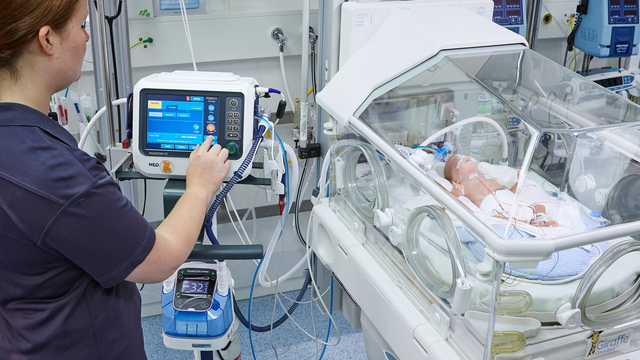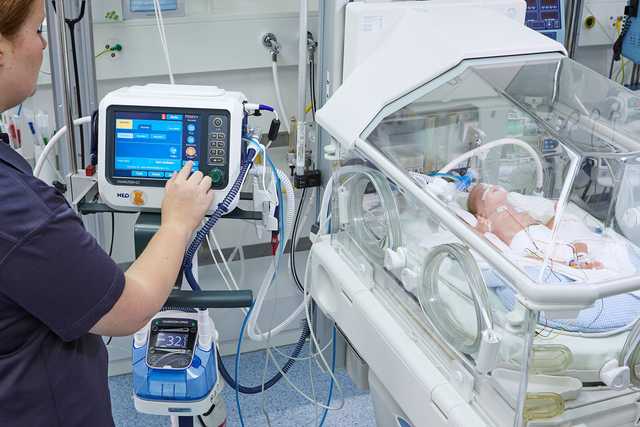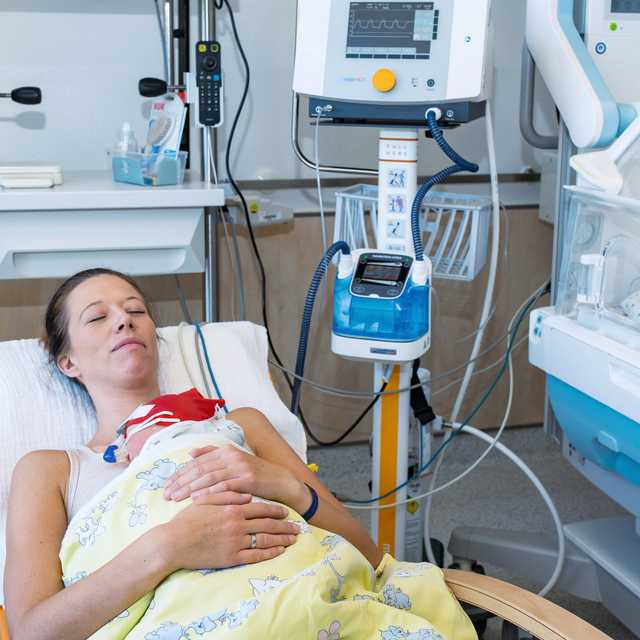

Breathing gas conditioning refers to the heating and humidification of the inspired air or the breathing gas administered. This can be done either actively using a humidifier or passively with an HME filter (heat and moisture exchanger).
Since the respiratory system of premature infants and newborns is frequently not yet fully developed or is at least very sensitive, active humidification systems are preferably used for small patients.
Reduces airway resistance
Improves lung compliance
Infection prophylaxis
Energy savings of the body of the small patient
Moisture is an important component of the respiratory system. It is the basis for the mucociliary transport system of the lungs which clears impurities from the airways.
During inspiration, air is warmed and humidified in the nasopharyngeal cavity and in the trachea. When it reaches the bronchial tubes, it is enriched with water vapor.

Medical gas is cold and dry and even after a short period of time, it has a significant negative effect on lung function and the mucous membranes. It disrupts the natural distribution of temperature and moisture and the valuable work of the mucociliary system is limited. The influence of ventilation tubes and the administration of high ventilation flows additionally need to be compensated by the mucous membranes in the airways.
Heated and humidified breathing gas, on the other hand, preserves the viscosity of the mucus. As a result, the ciliary activity (cilia = very fine hairs on the mucous membrane cells) is maintained.